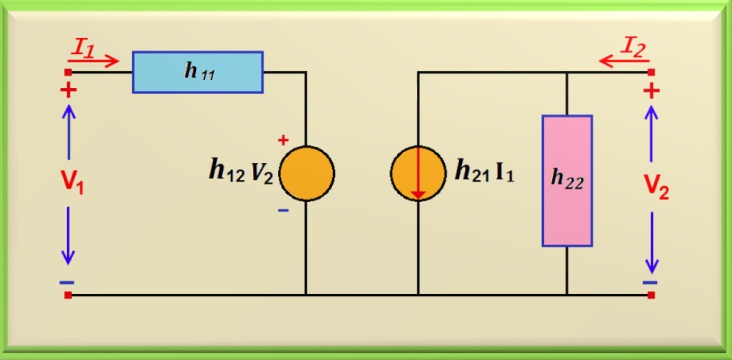Due to the fact that the parameters Z and Y do not always exist,
there is a need to create a third set of parameters, in which it is used V1 and
I2 as dependent variables, that is, the response of the circuit to an excitation
caused by I1 and V2. In the Figure 31-01
we see the various variables involved in determining of the parameters "H".
Then, the equations for the Hybrid Parameters, also known as Parameters "H", are:
These parameters are very useful in describing electronic devices such as transistors
and others.
We can define the Parameters "H" as:
a) h11 ⇒ Short-circuit input impedance.
b) h12 ⇒ Open circuit reverse voltage gain.
c) h21 ⇒ Short-circuit direct current gain.
d) h22 ⇒ Admittance of open circuit output.
We calculate h11 and h21 connecting a voltage source
V1 or a current source I1 to Port 1, while short-circuiting Port 2,
that is, V2 = 0. So, knowing
V1, I1 and I2 we can determine these parameters.
In the same way, we calculate h12 and h22 connecting a voltage source
V2 or a current source I2 to Port 2, while leaving Port 1 as an open circuit, that is, I1 = 0. So,
we determine the parameters.
When h12 = - h21, we say that the circuit is RECIPROCAL.
See the Figure 33-02 a model of an equivalent circuit of the Hybrid Parameters.



